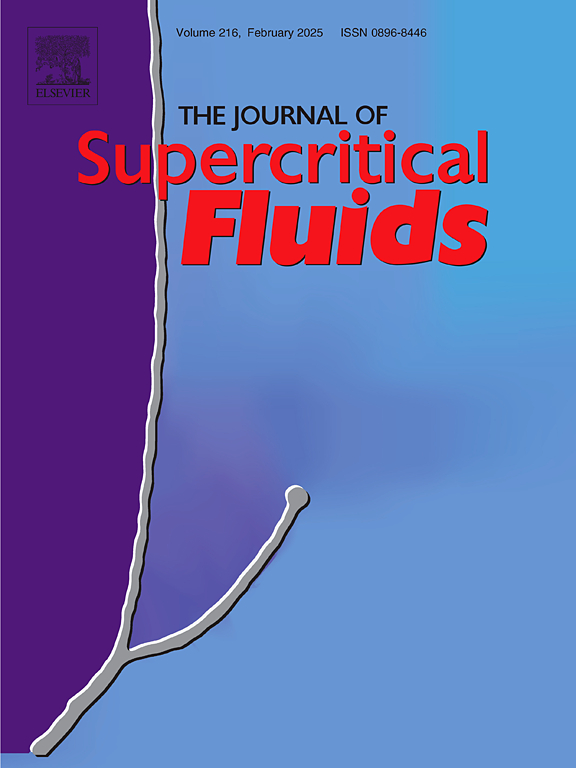通过超临界碳化提高褐煤基粉煤灰地聚合物砂浆的强度和CO 2吸收量
IF 4.4
3区 工程技术
Q2 CHEMISTRY, PHYSICAL
引用次数: 0
摘要
这项研究证明了超临界二氧化碳固化的潜力,以提高褐煤基粉煤灰地聚合物砂浆的性能和可持续性,为减少建筑行业的二氧化碳排放,同时改善材料性能提供了一种有前途的方法。研究全面比较了常规固化(GEO-REF)和超临界co2固化(GEO-CO 2),发现GEO-CO 2样品具有更高的抗压和抗弯强度,在固化后几乎立即达到峰值性能。超临界CO 2暴露导致碳化强化,其深度可达7.6 mm,碳化率可达67 %。XRD证实了CO₂固化引起的相变化,与GEO-REF相比,GEO-CO₂显示出更多的碳酸钙-方解石,碳酸钙-文石和氢氧化钙硅酸钙。氮气吸附/解吸研究表明,GEO-CO₂样品的孔径增大,但BET表面积减小,表明CO₂暴露导致结构变化。TGA分析表明,超临界CO₂固化降低了水潴留,增强了碳化作用,导致CaCO₃含量增加,Ca(OH)₂水平发生变化。本文章由计算机程序翻译,如有差异,请以英文原文为准。
Enhancing strength and CO₂ uptake in lignite-based fly ash geopolymer mortar through supercritical carbonation
This study demonstrates the potential of supercritical CO₂ curing to enhance the performance and sustainability of lignite-based fly ash geopolymer mortar offering a promising approach to reducing CO₂ emissions in the construction industry while improving material properties. The research comprehensively compared conventional curing (GEO-REF) with supercritical CO₂ curing (GEO-CO₂), revealing that GEO-CO₂ samples exhibited higher compressive and flexural strengths, achieving peak performance almost immediately after curing. Supercritical CO₂ exposure resulted in enhanced carbonation, with a depth of up to 7.6 mm and a carbonation rate of up to 67 %. XRD confirmed phase changes due to CO₂ curing, with GEO-CO₂ showing additional calcium carbonate-calcite, calcium carbonate-aragonite, and calcium silicate hydroxide compared to GEO-REF. Nitrogen adsorption/desorption studies indicated larger pore diameters but a reduced BET surface area in GEO-CO₂ samples, suggesting structural changes due to CO₂ exposure. TGA analysis revealed that supercritical CO₂ curing reduced water retention and enhanced carbonation, resulting in increased CaCO₃ content and changes in Ca(OH)₂ levels.
求助全文
通过发布文献求助,成功后即可免费获取论文全文。
去求助
来源期刊

Journal of Supercritical Fluids
工程技术-工程:化工
CiteScore
7.60
自引率
10.30%
发文量
236
审稿时长
56 days
期刊介绍:
The Journal of Supercritical Fluids is an international journal devoted to the fundamental and applied aspects of supercritical fluids and processes. Its aim is to provide a focused platform for academic and industrial researchers to report their findings and to have ready access to the advances in this rapidly growing field. Its coverage is multidisciplinary and includes both basic and applied topics.
Thermodynamics and phase equilibria, reaction kinetics and rate processes, thermal and transport properties, and all topics related to processing such as separations (extraction, fractionation, purification, chromatography) nucleation and impregnation are within the scope. Accounts of specific engineering applications such as those encountered in food, fuel, natural products, minerals, pharmaceuticals and polymer industries are included. Topics related to high pressure equipment design, analytical techniques, sensors, and process control methodologies are also within the scope of the journal.
 求助内容:
求助内容: 应助结果提醒方式:
应助结果提醒方式:


